“I don’t think I’d be in Skinny Puppy with Ogre if it was based on friendship – I don’t really see eye-to-eye with him all that much; he’s always been on a different plateau to me. He’s gone through his drug addiction and he’s basically put the face of the band as the face of his lyrics, turmoil and troubles, when in actuality, there’s a wide variety of opinions going on in this band.” – cEvin Key, 1992 telephone interview, Minneapolis.
While Skinny Puppy rightfully resides in the pantheon of industrial greats, the band never garnered the success or the same cultural impact as some of their peers. Indeed, Skinny Puppy’s influence, particular in their 80s and early 90s run of records, left an indelible mark on not just heavy and challenging music, but the arts in general. Unfortunately, their demise in the 90s was one of the leading factors in why the band never quite cut through the mainstream membrane, despite riding high during the impetus of the scene’s burgeoning popularity. What caused the band’s implosion in 1995 and subsequently stalled their trajectory? Well, predictably, the first reason was internal strife within the band; the second factor to consider was their unwavering tenacity in wanting to deliver something challenging and different, which ultimately made their appeal extremely limiting and niche. Ironically, as the scene was getting more mainstream attention in the early-to-mid 90s, Skinny Puppy were in the throes of making the most challenging music of their career, before imploding in 1995 with the departure of Key, and the death of Goettel. For me, I find this band fascinating; after making their fifth album, Rabies, the band went into a downward spiral and fell into the dark pockets of misery and turmoil, yet their work doesn’t decline in quality – more surprisingly still, Skinny Puppy are making the best material of their career in spite of the fact. So with that in mind, grab a coffee and fall down the rabbit hole with me, as I take you through the history of Skinny Puppy from 1987-1996, and layout where it all went wrong.
1984-1989 – Live shows, animal rights & Al Jourgensen
After releasing a string of excellent records between 1984-1987 – which by the latter half of the era was beginning to put a concerted effort into pushing boundaries experimentally – by 1988 the band were really starting to find their stride, gaining a lot of momentum and interest in what they were doing. This was largely down to Skinny Puppy’s infamous live performances, which were extravagantly grotesque and very theatrical: using a stage full of crude props, such as crucifixes, an assortment of fleshy mannequins, blades, a bucketload of blood, and a very convincing performance that saw Ogre cutting his face open with blunt objects and rusty blades, and encasing it in this incredibly bleak, decaying industrial aesthetic. If you watch their live recording Ain’t it Dead Yet?, a performance recorded in Toronto, Canada in 1987, you can bear witness to something not all that common at the time. Their stage show is a spectacle of suffering, horror and gore – which had a lasting resonance on band’s like Rammstein who would go on to emulate these kinds of visual and theatrical cues a decade later. These elaborate stage productions would grow more ambitious and realistic as time went on and by 1988, after the release of their fourth album, VIVIsectVI – a record which took a stance against vivisections and other animal rights issues (something Ogre was very passionate about) – they would perfect the art so convincingly, they had the police on their back after a show in Cincinnati, Ohio, after an observer called the police because they thought Ogre was performing a real vivisection on a dog (the dog was actually a prop used on tour, called Chud).
By 1989 Skinny Puppy were making real waves with their live shows and music. VIVIsectVI’s single “Testure” in particular really helped their profile, designed as an “accessible” radio hit to draw greater awareness to vivisections and their stance on animal rights. The gambit paid off too, landing the song at number 19 on the Hot Dance Music Billboard chart. However, by the late 80s things were starting to get more turbulent in the band, largely stemming from Ministry main-man, Al Jourgensen. From what I’ve been able to gather from the timeline, between 1987-1989, Key and Goettel were involved in various side-projects, including Hilt, Doubting Thomas and The Tear Garden, but while the two were doing other things Ogre ended up hitting it off with Jourgensen during a short-lived side-project called PTP, which was comprised of various Wax Trax! Records artists. Nothing particularly noteworthy came from PTP other than a single called “Show Me Your Spine”, which was featured on the 1987 classic Robocop, but Ogre and Jourgensen formed a budding friendship out of it and by 1988 Ogre was out on tour with Ministry promoting The Land of Rape and Honey. Despite the healthy creative freedom Skinny Puppy’s members were enjoying during this time, it would ultimately plant the seeds for a wide schism over the next half-decade, starting with Skinny Puppy’s next album, Rabies.
1989-1990 – Rabies, drug addiction & side-projects
For me, I appreciate the importance of Rabies and the experiences that came from the album, as I don’t think it would have allowed them to create their next two records in the same way, but it’s impossible to look at this as anything other than a flawed experiment. Jourgensen would co-produce with long-time collaborator Dave “Rave” Ogilvie, as well as play some guitar on tracks like “Fascist Jock Itch” and “Tin Omen”, but my biggest problem with Rabies is that, while the music was pre-written – according to Key in an Alternative Press interview, February 1991 – with Jourgensen in mind before he actually got involved, the cross-pollination and subliminal influence strips away the inimitable allure and atmosphere of Skinny Puppy’s revered sound. With the exception of “Worlock” and the ambient aspects of “River”, which foretell what’s to come in the future, the rest of the album is more of a jarring mix of Skinny Puppy and Ministry – using the same sampling and guitar styles as Jourgensen’s day job, which has pernicious side-effects on the band’s soundscape. The songwriting isn’t very strong either, and the dilution of the band’s unique style, to make way for a personality as big as Ministry’s frontman, doesn’t present a very appealing body of songs. More telling still is, outside of my overall feelings for the record, it appears Jourgensen’s involvement with Skinny Puppy deeply affected their dynamic, inducing a poison that would eventually gas the band out in a few years’ time. Al’s appetite for heroin had a tremendous effect on Ogre during this period, as he began to familiarise himself with the drug, and tensions within the band were exacerbated further when Ogre decided to dropped any promotion for Rabies in favour of touring with Ministry, to promote The Mind Is a Terrible Thing to Taste. Couple that with Ogre joining a side-project with Jourgensen called Revolting Cocks – to contribute to their sophomore album, Steers, Beers, and Queers – and the divide within the band would grow wider.
This tension was reciprocated by Key and Goettel as they continued their own side-projects, while Ogre was doing his stuff on the side. The unaddressed issue was that, in Goettel’s opinion, everyone felt more satisfied with doing things outside of Skinny Puppy.
“…we weren’t doing the tour [to promote Rabies], we weren’t supporting the album, Ogre was in Chicago satisfying a lot of things that weren’t being satisfied in Vancouver or in Puppy, and obviously Cevin and myself were satisfying a lot of things we wanted to do. Just the fact that there was so much satisfaction coming from outside Skinny Puppy led to that feeling of ‘The End.'” – Dwayne Goettel
Nevertheless, Goettel and Key’s resentment towards Ogre would fester over the coming years, accusing Ogre of focusing more on projects outside of Skinny Puppy, with Key dropping various comments in interviews where he said it felt “like a wife that’s been cheated on”. This indictment would hold weight too, when you consider that, during The Mind Is a Terrible Thing to Taste tour, Ogre very nearly became an official member of Ministry.
In his words:
“There were possibilities of me joining Ministry, but I didn’t have a very good time on that tour.” […] “Al is a fucking great guy, a real cool person. There are things that I admire about him… a lot. But there were a few things that happened between me and him that really made me question our whole friendship and his reason for having me down there. So I decided to bow out of the Revolting Cocks tour. If I hadn’t, I would have come back totally addicted to heroin.” – Ogre
1990-1991 – Too Dark Park & Pigface
With the involvement of Al in the Puppy camp in ’89 and all that had transpired in between the development of Rabies and the subsequent focus on stuff outside of Skinny Puppy, as well as Ogre’s growing drug addiction problems, there was, understandably, a palpable atmosphere in the camp. However, after what happened between Al and Ogre during the Ministry tour, Ogre stepping away from Jourgensen allowed Skinny Puppy to get into the studio and back to the drawing board to reevaluate their position on what makes the quintessential Skinny Puppy sound, and how they could evolve it. As such, Too Dark Park is a watershed moment in the band’s career and, arguably, the band’s crowning achievement. In Alternative Press, No. 33, Key said Too Dark Park was the true successor to what he referred to as Skinny Puppy’s “last pure” Skinny Puppy album, VIVIsectVI. It’s hard to argue with his sentiment either. The band’s sixth LP is an unapologetic blend of their signature industrial sounds with a crushingly abrasive attitude being poured over it. It’s a mixture that reintroduces their beloved atmosphere, but successfully reintroduces the harder, darker, heavier approach Rabies failed to achieve. Indeed, with a level of introspection, Key realised the path they were going down sonically was a bleak one, hence the album’s title – a dual references which also refers to Stanley Park: a place Key talks about in his YouTube deep-dive video, “Sunday Live Chat; The Story of Too Dark Park”, where he mentions Stanley Park having a storied history with the band and a place that is spiritually ominous and haunted.
Too Dark Park is a seminal classic, touching on concepts of humanity’s own self-destruction and environmental degradation, the linchpins of the record, while the sonic playground it walks on is, as Key describes to Post TV in 1990, “really dark”.
Key expands further:
“Too Dark Park was a regrouping of the original incentives we had at the beginning of the band’s inception. The processes and the directions were largely a return to the Skinny Puppy process, verses what we had experienced through Rabies and the disattached feeling to the music we were making. So Too Dark Park is a cleansing of the soul and a return to a purer condition for Skinny Puppy.”
It’s amazing to me that during the height of Ogre’s drug addiction and the mounting rift between Goettel and Key verses Ogre, the band were able to reinvent the wheel and craft such a seminal work. Their tour promoting the record was also a big success, with Ogre reciting it as a highlight in his career. Their stage performances from this time ramped up the theatrics to 11, with the band pushing the audience to the limit, using the infamous Japanese snuff series Guinea Pig as a visual backdrop, while Ogre roamed around the stage on stilts and pneumatic crutches (something Marilyn Manson would adopt into his live shows six years later). The set up was an experiment to see how people would react to such visceral imagery, as opposed to something that had, up until that point, been staged. In an interview with RIP magazine in 1992, Ogre reveals:
“We did an experiment. We’ve always been accused of celebrating violence for idiotic reasons. So, we used some images in our show from a film called Guinea Pig. They’re these incredibly realistic, but simulated, Japanese snuff films. We inserted them into this roller-coaster ride of violent images and people were quite disgusted. People were vomiting in front of the stage. People came up to me after the show, saying I was the most disgusting human being-until they found out what it was all about. The whole reason we did that was to see if there was a difference. Will people react differently to something that’s real as opposed to something they know is staged? They will. There’s a whole different set of emotions people go through. It doesn’t look like it looks on TV. It’s quite” sickening.”
1991-1992 – Last Rights
After the completion of Too Dark Park, for a brief spell in 1991 Ogre joined supergroup Pigface, taking on the role of lead singer. It was during this time Ogre also focused on getting off heroin. In an interview with CiTR-FM, he talked about how he contracted hepatitis A and was hospitalised from it, having the support from Pigface to get him through “his hour of need”. In his YouTube video “Sunday Live Chat; The Story of Last Right”, Key talks about the intensity of the Too Dark Park tour and how, for the first time in his career, he was so overwhelmed he had to walk away from it, frequently seeing his girlfriend in Florida and wearing brighter coloured cloths in an attempt to relieve himself from the horror and intensity of the tour. After the tour, Skinny Puppy set out to make their seventh studio album, Last Rights, and as Key puts it in his Sunday Live Chat:
“When we got on the road [For the Too Dark Park tour], to go through that whole experience and then to go through the ordeal of making an album, based upon what you’d just experienced, I think the experience of making Last Rights was a completely natural progression to what everyone was feeling. It was a complete expulsion of emotions. I know that it was a dark period for Ogre, and there were times during the Too Dark Park and Last Rights tours where we were in complete separation from each other.”
Unsurprisingly, the making of Last Rights was tense, with Goettel and Key composing the music during the day and Ogre, under the supervision of Ogilvie, laying down the vocal tracks at night. However, despite the difficulty in producing such a record, Last Rights is lauded as being one of the greatest industrial albums ever made. It is a very challenging record to get into, but the intricate density makes it a worthwhile experience if you’re willing to put in the effort to listen to it more than a handful of times. It’s an extremely flammable potion, synthesised by a trio sitting on a cliff’s edge. Nine Inch Nails’ The Downward Spiral has a similar threaded narrative of the descent into madness, though Last Rights takes this mantra to another solar system two years prior. The introduction of “Love in Vein” begins the descent into the blackened void, with the subsequent five tracks operating on the same relatively “conventional” line, in the sense that they hold some semblance of structure and melody to them. Yet, make no mistake; the term conventional here feels a bit misleading, since even these tracks have an unhinged aura about them. However, once you get to the second half of the LP, they’re going to look like endorphin-releasing NSYNC pop bangers next to the likes of “Lust Chance”, “Circustance” and “Download” where all bets are truly off. It’s indicative of where the band’s headspace was at – a reflection of utter communication failure and the chaos going on around them – a soundtrack wrought by addiction and a lack of interest in resolving the glaring elephant in the room. And that’s what makes this album so special. That weaving narrative which underpins Last Rights is nothing short of genius. It’s a complex web of atonal anguish, a cacophonous cocktail of borderless tracks with the start and stop time being the only thing reining it in.
I managed to find an original copy of this a couple years ago and always wondered why track 10 was blank on the B side of the record, it turns out track 10, titled “Left Handshake”, was omitted from the tracklisting due to a copyright dispute regarding a vocal sample from Timothy Leary’s Turn On, Tune In, Drop Out. While Mr. Leary approved it, it was denied by the copyright holder, Henry G. Saperstein. The track in question slots right into the second half of the album: a nightmarish fever dream with driving drums and gasping vocals from Ogre. As Ogre coined it to Mike Gitter for RIP Magazine in 1992, the album is a “document of delusion” that captures the apex of the worst, most painful moments of his life. Last Rights audibly picks up on Ogre’s suffering throughout, even commenting in interviews that he was having hallucination while he was recording. This record literally has Ogre pouring his soul into the music, which is why the lyrics were never put to print on the liner notes. The irony here is that, in spite of bleak subject matter and hellish soundscapes, and the fact this is bar none the hardest Puppy album to get into, the album still managed to hit 193 on the Billboard 200, as well as peaking at 10 on the Billboard’s Heatseekers chart.
1993-1996 – The Process, Goettel’s death & Skinny Puppy’s break up
After finishing work on their 1992 masterpiece, Skinny Puppy had reached the end of their record contract with Nettwork, signing a new three album deal with America Recordings. While things were looking optimistic for the band, moving to sunny Malibu to record their eighth studio album, the entire endeavour would prove to be a bitter final reckoning for this iteration of the band. Put bluntly, outside of the internal tensions, The Process was met with a freakish amount of turmoil. Mother Nature played an integral part in this record’s tumult – hurling all the elements at the band during record. The studio they were recording in burnt down by wild fires, they were hit with severe floods, and then finally topping it all off with the Northridge earthquake in 1994. If that wasn’t bad enough, declining relationships within the band were at a fever pitch, with Key and Ogre at each other’s throats that much they stopped talking to each other entirely. The band went through a number of producers during the course of recording, starting off with Roli Mosimann, who was then replaced with Pigface’s Martin Atkins, before desperately bringing in Rave to help them out. The process (no pun intended) was wrought by such troubles, stretching on for so long and costing so much money, America Recordings decided to alter the record deal from three albums to just one, subsequently dropping them from the label once The Process was released. When the album was finally cobbled together in 1994, Goettel and Key flew back to Vancouver with the masters, while Ogre remained in LA. Relations were so bad in the camp that in June 1995, Ogre quit the band entirely, followed by Goettel’s death in August of that year. Dwayne Goettel had fallen prey to heroin and died of a drug overdose at his parent’s house.
After the death of Goettel, Key and Rave got together and finished the album, dedicating it to Goettel and releasing it 27th February, 1996 to a mixed reception. For me personally, while I quite like the oppressive tone, it’s clear as day the songs feel unfinished. Ironically, stylistically, the album feels like a regression to the Rabies era, relying heavily on razer-sharp, chugging guitars only with a dance-orientated flair to them. Ogre takes on a different approach vocally as well, using a spoken-word style, which for me, mostly, doesn’t work well. The album was supposed to be a concept on Process Church of the Final Judgment, which Charles Manson was believed to have ties with, but again, like every here it feels rather undercooked.
Conclusion
Overall, a rather dreary and whimpering way for such an influential act to go out. I personally believe, listening to and reading various interviews for this essay, the main reason the band went out the way they did was because of a lack of communication and wanting to address the issues within the band. What I find most strange about Key and Ogre’s relationship in particular is they both knew what the problems were but never address the issues at hand, just accepted them as part of the package and tried to press on as best they could. Goettel’s death is a deeply sad end to a very talented musician, and I honestly believe that while Skinny Puppy’s reunion albums are solid enough, they lack the spark Goettel brought to their 1987-1992 run of records.

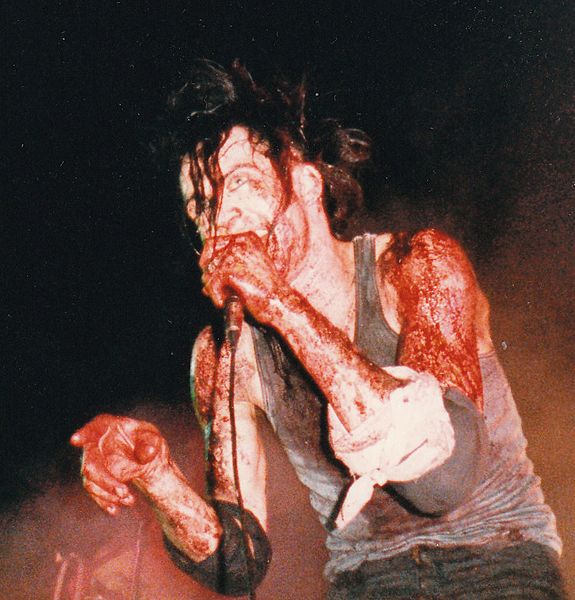
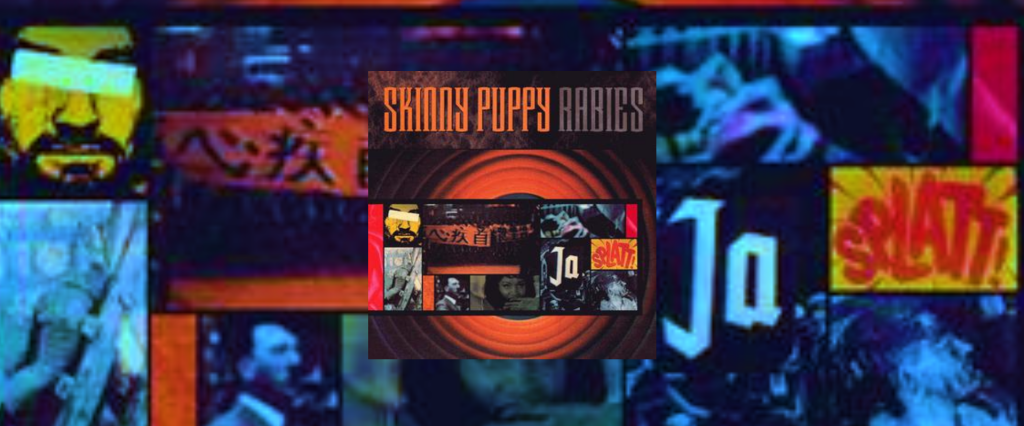
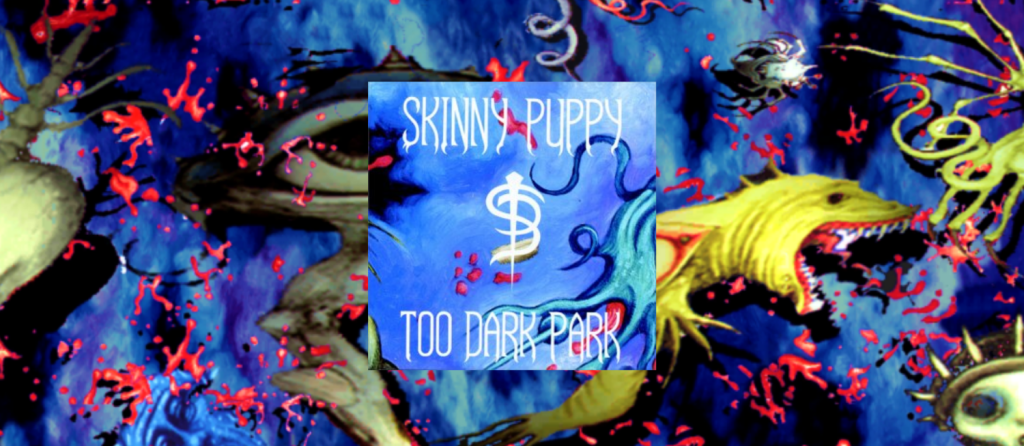
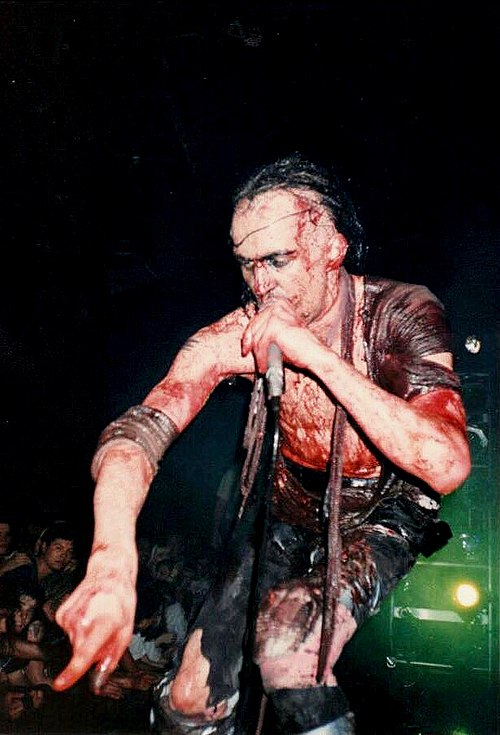
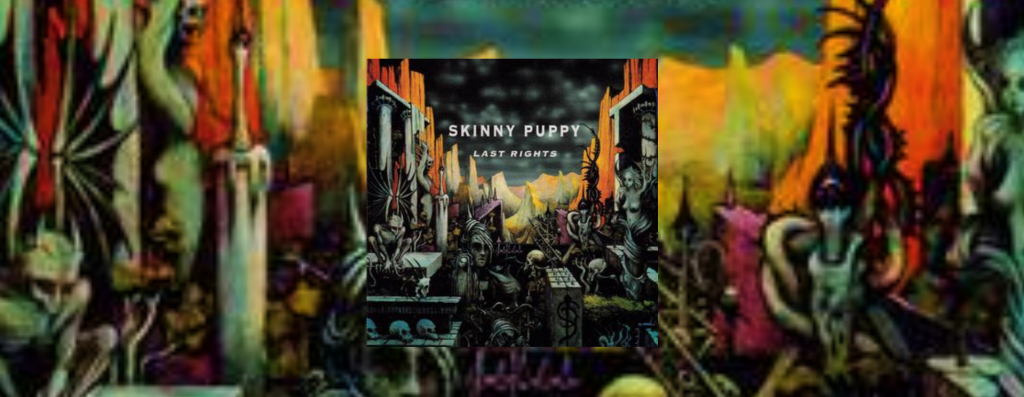
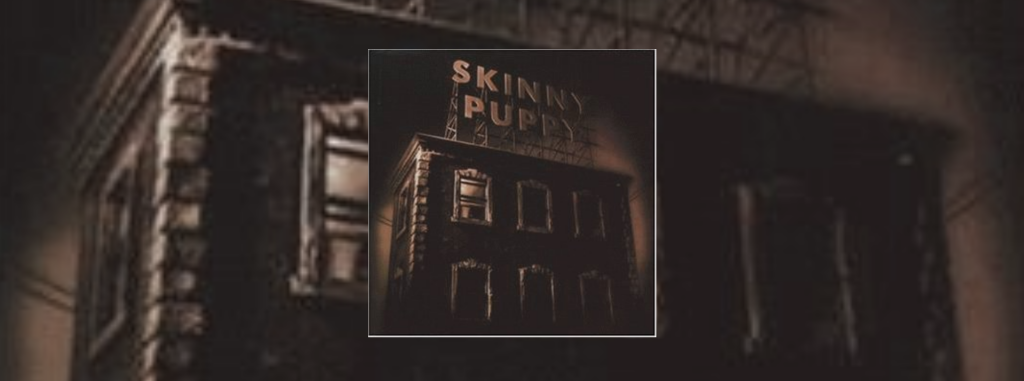



05.26.25
05.26.25
05.27.25
And same RVA, I was surprised by al’s negative influence as well. I didn’t put too much emphasis on him here, because there’s two minds of thought on it. Some people say he got ogre hooked on it and actively tried to break up SP, others say he didn’t do as much damage as everyone says, but I think it’s somewhere in the middle. Since he was a party animal himself, he will have actively encouraged the use of drugs and things, just because he was that way inclined. I also think if it wasn’t for the vague disagreement al and ogre had during the mind is a terrible thing to taste tour, the likely hood SO would have made too dark park would have been slim
05.27.25
05.27.25
05.27.25
05.28.25
05.29.25
06.02.25
I read a huge article back in the day talking about how most the issues with The Process recordings were inflicted by American Records. They were trying to get Skinny Puppy to be an industrial band that they weren't and never were. Something more similar to NIN or Stabbing Westward. They hated the 'hip hop' keyboard influence on "Death", they hated the new vocal style (So did Cevin Key, though, too), and they hated that it wasn't catchy. Those songs are as streamlined as they are due to forced influence. American Records are also the ones that wanted to pick the producer so they could more effectively dictate direction. They didn't bring Rave back until all hope was essentially lost and they were just trying to cut their losses.
I'm not a big fan of their post reunion stuff, so I'm not sad you didn't waste much time with it. To me, from what I've read, I definitely blame Al for setting SP's demise in motion on Rabies.
06.04.25
@Willie
I wanted to put a lot of my efforts into researching the juicy part of their career. I could have gone beyond The Process, but I only had the intention of going that far. It's funny though, considering how interesting the process was for The Process, I couldn't find very much in the way of interviews and information in general regarding that era, though, as you've touched on, I did read the producers tried to make them sound more commercial, like NIN - which is hilarious lol. Apparently Akins played a big part in exacerbating the rift between the members during the making of The Process too.
Dunno if you've watched them already, but those YouTube videos Key did, discussing the making of Too Dark park and Last Rights are pure gold - extremely informative.
06.04.25
06.05.25
06.05.25